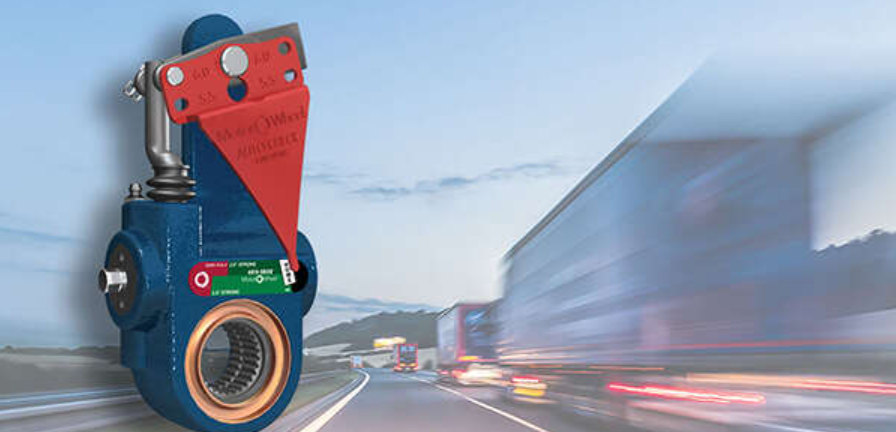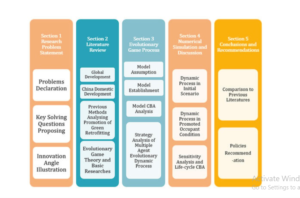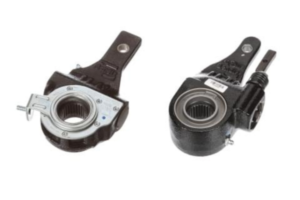Automated Braking Systems (ABS) enhance vehicle control during abrupt stops. Automatic Slack Adjusters (ASA) maintain optimal brake tension in concert.
Automated Braking Systems have revolutionized vehicle safety by preventing wheel lockup during emergencies, offering drivers a new level of control and stability. The integration with Automatic Slack Adjusters ensures that the brakes remain in ideal adjustment, which is crucial for the effective functioning of ABS.
This combo minimizes stopping distances and maintains consistent brake performance, essential for heavy-duty vehicles like trucks and buses. With safety regulations becoming increasingly stringent, the synergy between ABS and ASA plays a pivotal role in meeting industry standards, reducing maintenance costs, and enhancing road safety for all users. Fleet operators and drivers thus benefit from reduced wear and tear, fewer brake-related incidents, and a boost in overall vehicle safety.
Automated Braking Systems (abs)
Automated Braking Systems (ABS) are essential in today’s vehicles. They help prevent accidents by taking charge during critical moments. ABS allows drivers to maintain control while braking. This integration in modern vehicles promises enhanced safety for everyone on the road.
Types Of Abs
Diverse ABS configurations cater to different vehicle models.
- Four-channel, four-sensor ABS – One channel per wheel; supreme control and stability.
- Three-channel, three-sensor ABS – Often found in pickup trucks and older vehicles.
- One-channel, one-sensor ABS – Modest system, typically for rear wheels.
Operation Of Abs
ABS operates through a sophisticated system:
- Wheel speed sensors monitor rotational speed.
- Control module assesses data constantly.
- Hydraulic valves manage brake pressure.
Together, these components work to prevent wheel lock-up.
Benefits Of Abs
ABS technology yields numerous advantages:
- Improves vehicle control during braking.
- Reduces skidding chances on slippery surfaces.
- Enables shorter stopping distances.
Limitations Of Abs
While beneficial, ABS has certain constraints:
- May not reduce stopping distance on loose material.
- Effectiveness can falter with improper maintenance.
- Relies on driver’s understanding to be fully effective.

Automatic Slack Adjuster (asa)
Safety on the road is vital for every vehicle, and the Automatic Slack Adjuster (ASA) plays a crucial role in heavy-duty vehicles. It is an essential component in the automated braking system, ensuring brakes are consistently effective and reliable.
Function Of Asa
The ASA automatically adjusts the brakes to compensate for wear. As brake pads erode over time, the adjuster maintains the correct distance between the drum and brake lining. This action is vital for optimal brake performance and safety.
Types Of Asa
- Manual Slack Adjusters: Require regular manual adjustments.
- Automatic Slack Adjusters: Adjust themselves to maintain brake efficiency.
Benefits Of Asa
The main advantages include:
- Improved safety with consistent braking.
- Extended brake component life due to reduced wear.
- Lower maintenance effort and costs.
- Compliance with safety regulations.
- Peace of mind for drivers.
Limitations Of Asa
Despite its benefits, ASA systems can have limitations:
- They require proper installation and calibration.
- Regular maintenance checks are still necessary.
- Incompatible parts can lead to system failure.
Integration Of Abs And Asa
The seamless union of Automated Braking Systems (ABS) and Automatic Slack Adjusters (ASA) shapes the future of vehicle safety. This integration maximizes braking efficiency and reduces maintenance needs.
Why Integrate Abs And Asa?
Combining ABS and ASA addresses two critical aspects of vehicle braking: reaction time and brake wear adjustment.
- ABS ensures rapid response during sudden stops.
- ASA maintains optimal brake slack, crucial for effective brake engagement.
How Abs And Asa Are Integrated
In an integrated system, ABS and ASA communicate through electronic signals. This allows them to adjust in real-time, ensuring superior brake performance.
Component | Function |
ABS Module | Monitors wheel speed, controls braking force. |
ASA Device | Automatically adjusts brake slack. |
Sensors & Signals | Facilitate communication and adjustments. |
Benefits Of Abs And Asa Integration
This integration brings numerous advantages to both drivers and fleet managers:
- Enhanced safety with better brake control.
- Lower risk of brake-related accidents.
- Reduced maintenance time and costs.
- Extended lifespan for brake components.
- Improved compliance with safety regulations.
Factors To Consider When Integrating Abs And Asa
Vehicles today are increasingly equipped with advanced safety features. Integrating Automated Braking Systems (ABS) with Automatic Slack Adjusters (ASA) is essential for modern fleets. It enhances safety and complies with regulatory standards. A successful integration relies on several key factors.
Compatibility Of Abs And Asa
Check system compatibility first. Both systems should sync flawlessly for optimal performance. ABS and ASA from the same manufacturer often ensure seamless integration. Equipment specs need careful review. Ensure parts work together without issues.
Compatibility Check | Details |
Manufacturer | Preferably the same for both systems |
Connection Type | Must match between ABS and ASA units |
Software | Requires updates for new integrations |
Cost Of Integration
Assess the total cost of integration. It includes parts, labor, and potential downtime. Weigh these against the long-term benefits of reduced maintenance and increased safety. Research available incentives or grants to offset costs.
- Parts cost
- Labor charges
- Downtime duration
- Potential savings
Safety Considerations
Safety is priority. A well-integrated system prevents brake failures and accidents. Ensure the integration aligns with the latest safety regulations. It should enhance vehicle control and stability, especially in harsh driving conditions.
- Regulatory compliance
- Prevention of brake failures
- Improved vehicle stability
Training Requirements For Drivers And Technicians
Train drivers and technicians properly. They should understand the new systems. Training ensures everyone knows how to operate and maintain the integrated systems safely. Regular refresher courses are vital to keep skills up-to-date.
- Driver Training
- How to use the new system effectively
- Technician Training
- Maintenance and troubleshooting
- Regular Updates
- Keep skills sharp with ongoing education
Examples Of Abs And Asa Integration
Understanding how Automated Braking Systems (ABS) and Automatic Slack Adjusters (ASA) work together is key to safer, more efficient vehicles. These technologies impact both personal cars and heavy trucks. ABS prevents wheel lockup during hard braking. ASA maintains the optimal distance between brake drums and linings. Together, they offer top-notch brake performance. Let’s examine real-world integrations of these systems through two case studies.
Case Study 1
Oceanside Transport Solutions upgraded their fleet with a new ABS and ASA integration.
- Challenge: High brake wear and poor stopping distance.
- Solution: Installing advanced ABS with ASA.
- Outcome: 20% less brake maintenance and 15% improved stopping times.
Before Integration | After Integration |
High maintenance costs | Reduced expenses |
Long stopping distances | Quicker, safer stops |
Case Study 2
Citywide Delivery Services adopted an integrated system to reduce accidents.
- Analyze historical accident data.
- Identify braking system lag as a cause.
- Introduce an integrated ABS and ASA solution.
Results: A striking drop in reported incidents by 25% within six months.
Future Of Abs And Asa Integration
Automated Braking Systems (ABS) and Automatic Slack Adjusters (ASA) stand at the forefront of vehicle safety and efficiency. Their integration promises unprecedented benefits in the world of transportation. This integration creates a synergy that enhances brake performance and reduces maintenance needs. Explore the future landscape shaped by these innovative technologies.
Technological Advancements
- Smart algorithms predict and react to driving conditions.
- Integration contributes to self-diagnosing brake systems.
- New materials lead to lighter and more durable components.
Impact On Industry
Aspect | Impact |
Safety | Reduces road accidents |
Efficiency | Optimizes fuel usage |
Maintenance | Decreases downtime |
Longevity | Extends vehicle life |
The industry witnesses enhanced safety standards and economic savings. Carriers benefit from optimized performance and reduced operation costs. Fleet managers value the improved reliability and compliance with safety regulations.
Challenges To Adoption
- Integration costs might be initially high.
- Training for technicians is required for maintenance.
- Parts compatibility can be a concern across various models.
While the integration holds vast potential, adaptation may come with hurdles. Cost and training are significant barriers. Ensuring compatibility across a diverse fleet presents another challenge.

Impact On Commercial Vehicle Industry
Integrating Automated Braking Systems (ABS) and Automatic Slack Adjusters (ASA) is revolutionizing the commercial vehicle industry. These advanced technologies combine to enhance vehicle control and maintenance, impacting safety, costs, efficiency, and regulation compliance dramatically.
Reducing Accidents And Improving Safety
Automated Braking Systems and Automatic Slack Adjusters help prevent accidents. They work together to maintain optimal brake performance. ABS prevents wheel lockup, while ASA ensures brakes are always properly adjusted. This integration results in:
- Shorter stopping distances
- Better vehicle control during emergency braking
- Reduced risk of brake-related accidents
Lowering Costs And Decreasing Downtime
Fleets save money with reduced brake maintenance needs. Automatic adjustments from ASA mean brakes are always in peak condition, which leads to:
- Lower maintenance and repair costs
- Extended lifespan of brake components
- Minimized vehicle downtime
This saves both time and money, ensuring trucks spend more time on the road.
Increasing Efficiency And Productivity
Effective braking systems enable trucks to operate more reliably, contributing to:
- Consistent delivery times
- Improved fleet management and scheduling
- Enhanced road safety for drivers and cargo
With ABS and ASA, vehicles handle better, improving overall transit efficiency.
Compliance With Regulations
Meeting regulations is critical for commercial vehicle operations. These technologies ensure vehicles comply with safety standards, as they:
- Keep brake systems within legal requirements
- Reduce violations and potential fines
- Support a company’s safety culture and reputation
ABS and ASA integration is a smart investment for fleet compliance and safety.
Potential Challenges Of Abs And Asa Integration
Integrating Automated Braking Systems (ABS) with Automatic Slack Adjusters (ASA) adds modern tech to vehicles. It makes braking safer. Still, it can be hard to bring together. This blog post looks at the hurdles faced when combining ABS and ASA.
Reliability Concerns
When ABS and ASA work together, they must perform flawlessly. Any fault in one can affect the whole system. Drivers trust these systems for their safety on the road. Making sure both components talk to each other without error is a big challenge. Issues like sensor failures or software glitches can lead to unsafe conditions.
Maintenance Requirements
Making sure ABS and ASA are both in good shape needs regular checks. Maintenance becomes more complex with both systems. It can mean more time and money spent on upkeep. Parts for these systems must be of top quality to prevent breakdowns.
Technician And Driver Training
- Technicians must learn new skills to fix ABS and ASA systems together.
- Training takes time and money.
- Drivers must also understand how these systems change driving and braking.
- Good training helps prevent mistakes and keeps everyone safe.
Conclusion
To sum up, automated braking systems with automatic slack adjusters represent a significant leap in vehicular safety. This integration ensures consistent brake performance, reduces the risk of accidents, and promotes road safety. Embracing these technologies is a critical step for any forward-thinking fleet manager or vehicle owner prioritizing efficiency and security.
Related Article
Read Now
How Much Free Play Should You Expect in a Slack Adjuster? Maximize Performance!
The ideal amount of free play in a slack adjuster...
Read MoreRevolutionary Evolution: Historical Development of the Automatic Slack Adjuster
The automatic slack adjuster (ASA) has developed over time to...
Read MoreCustom Solutions for Automatic Slack Adjuster Systems: Boost Safety & Efficiency
Custom Solutions for Automatic Slack Adjuster Systems enhance braking consistency...
Read MoreAutomatic Slack Adjuster Warranty And Repair Information: Quick Guide
Automatic Slack Adjusters come with various warranty conditions, which typically...
Read More



